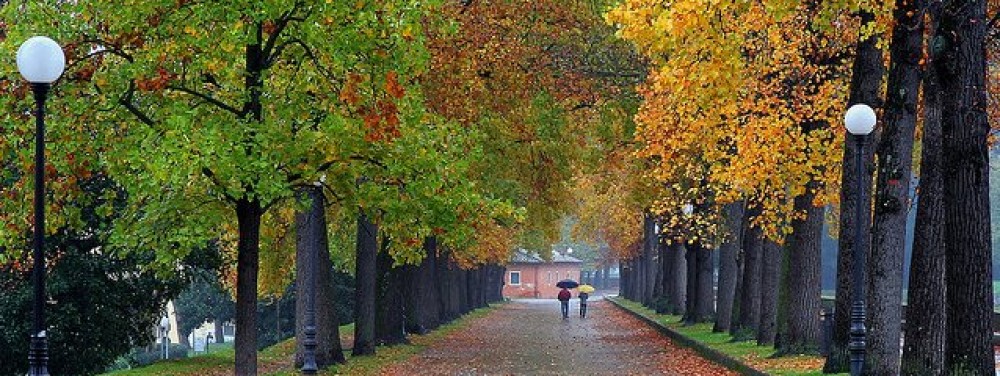In Lucca, Giacomo Puccini is definitely ‘The Man’. Even if you know nothing about Puccini, you probably know his work, or at least the arias from his most famous operas. It seems to me that his music plays in the background of our lives.

Puccini with a camellia in Piazza Cittadella
Puccini was born In Lucca in 1858 to a lower middle class musical family, that went back five generations. He was one of many children but he was given a name that included 6 first names and it’s not hard to imagine that great things were wished for the child. Unfortunately, his father, the reigning Lucca Maestro of Music, died when Giacomo was only six. His musical future was then in the hands of an uncle. It was presumed that eventually he would follow in the footsteps of father, grandfather, etc.

But, he didn’t. After seeing a production of Verdi’s ‘Aida’, Puccini left Lucca to study composition in Milan and never looked back. The Lucchese were not pleased by the rejection, especially from a young man of modest circumstances. Thus began a caustic relationship between city and composer that lasted for many, many years. After he achieved financial independence, Puccini built a villa at Torre del Lago, which is not far from Lucca, but, apparently, far enough. When he was not traveling, he lived there until his death.

Portrait, 1902
Puccini wrote twelve operas which were very successful during his life and of course, are staged everywhere now. Three operas, La Boheme, Tosca and Madame Butterfly were produced to great acclaim within a ten-year span, between 1896 and 1905.
Like a Rock Star worthy of the title, there was scandal associated with Puccini. While he was still toiling away as a church organist back in Lucca, he had a torrid love affair with the wife of one of Lucca’s most influential merchants. After the woman became pregnant, the couple left town and lived together in sin, certainly a shocking situation in Lucca. After Elvira’s husband died, they were then able to marry. Of course, the life of the rock star comes with temptations and Puccini was reported to be a serious womanizer. His name was often linked romantically with the sopranos of his operas. A handsome man who didn’t shy away from the camera, he wore stylish clothes and always was well turned out. He seems to have a cigarette in almost every picture, which likely led to his death of throat cancer at age 65.


I visited Torre del Largo not long ago which is now a music venue, staging events throughout the summer months. In addition, the Puccini home is now a museum and mausoleum. There are many, many photos of Puccini in fast cars and fast boats. I think he enjoyed the fast life and used the house on the lake as a refuge from his rock star status. It was very peaceful place, conducive to composing his beautiful music. It was also a place where he could pursue his other passion, hunting.

View of Torre del Lago from above

The lake with the mountain backdrop

The music venue
Lucca is extremely proud of its native son. His birth home in Piazza Cittadella is a museum which contains photos, costumes, scores, letters and the Steinway on which he composed Turandot. There is a nightly concert of his music, during the spring and summer months, at the Church of San Giovanni. I’m a bit embarrassed to admit that I have never seen a Puccini opera performed live. I think I need to remedy that.
 The extensive grounds of Villa Torrigiani would be the perfect place to explore and picnic on a warm summer day.
The extensive grounds of Villa Torrigiani would be the perfect place to explore and picnic on a warm summer day.












































